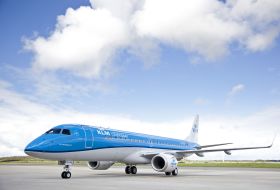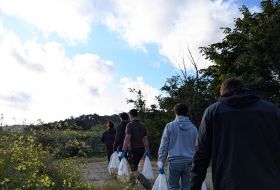Summary
Overview
Visitor statistics are collected through the Jersey Exit Surveys. The Jersey Exit Surveys are a comprehensive research programme that delivers robust statistics on the volume, characteristics, and experiences of visitors to Jersey. Based on the UK Office for National Statistics’ International Passenger Survey (IPS), it is adapted to Jersey’s unique transport and visitor context. The survey consists of two complementary surveys, together providing a complete picture of visitor travel and experience.
Objectives
The primary objectives of the Jersey Exit Surveys are to:
- Estimate the volume of visitors and nights spent in Jersey
- Estimate visitor expenditure and monitor visitor experience
- Provide detailed estimates broken down by visitor demographics, including country of residence and purpose of visit
- Deliver actionable data to Visit Jersey, tourism organisations and the Government of Jersey to enhance tourism strategies and marketing efforts
Visitor Definition
A visitor is someone whose primary residence is outside Jersey. Visitors may travel for leisure, to see friends or family, for business, or other purposes. The definition excludes individuals in transit, those returning to the island as part of the same trip, and seasonal workers. Anyone staying on the island for over 60 days is not considered a visitor.
Data Collection
Data Collection Components
1. Visitor Volume Survey
This short questionnaire (less than 5 minutes) captures essential departure information and is weighted against passenger numbers provided by the Ports of Jersey. The estimates are broken down by type (e.g. residents, visitors, seasonal workers). It also captures key visitor metrics such as total volume, nights stayed, purpose of travel and country of residence. The statistics from this survey are published monthly.
2. Visitor Experience Survey
A more detailed questionnaire (approximately 15 minutes) focused on expenditure and visitor satisfaction. Passengers are screened beforehand to ensure only departing visitors complete the survey. This survey collects detailed information about visitor motivations, experiences, satisfaction, and expenditure. The results are calibrated using the weights from the Visitor Experience Survey. The statistics from this survey are published quarterly.
3. Total departing passenger numbers
This administrative dataset, provided by Ports of Jersey, reports the total number of departing passengers from Jersey by sea and air. These figures are used as the population totals to weight the sample data collected through the Visitor Volume Survey and Visitor Experience Survey.
4. Expenditure of visitors by yacht
Visit Jersey runs a separate survey to collect expenditure information from those who come by yacht.
Together, these components give a comprehensive understanding of visitor profiles and experiences.
Population & Sampling Frame
Target Populations
Visitor Volume Survey: The target population includes all departing passengers from Jersey, regardless of residency or length of stay (visitors, residents, seasonal workers, transit passengers, and returning visitors embarking on day trips).
Visitor Experience Survey: The target population only includes departing visitors who meet the definition above.
Sampling Frame
The sampling frame includes passengers on scheduled commercial flights and ferries, based on operational departure data provided by Ports of Jersey. This differs from the target population, which encompasses all departing passengers. Individuals travelling by private planes, yachts, or cruise ships are not directly sampled, as they represent a tiny proportion of total departures and would be logistically difficult and expensive to survey. Instead, their data is imputed using informed assumptions and included in the final statistics where relevant.
Sampling & Interviewing Approach
Overview
The Exit Survey uses a mixed-method sampling and interviewing strategy to capture robust, representative data on departing passengers from Jersey. It combines face-to-face interviews with email surveys, guided by a stratified sampling framework and rigorous operational scheduling to reduce bias and maximise representativeness.
Interviewing Strategy
- Face-to-face interviews with foot passengers are conducted by trained interviewers at Jersey Airport and ferry terminals.
- The main ferry operator distributes email surveys to passengers.
Interviewers are fluent in English, French, German, Portuguese and Polish, supporting participation from international visitors.
Shifts are scheduled to align with departure times:
- Airport: ~90 minutes before flight departure
- Harbour: 90 minutes to 2 hours before ferry departure
Shifts are spread across all days of the week and times of day, with passengers selected randomly within shifts to minimise bias. The Visitor Volume Survey is designed for broad coverage across routes and traveller types. At the same time, the Visitor Experience Survey is focused on high-visitor periods (e.g. weekend mornings or busy ferry departures) based on historical passenger data.
Shift plans are regularly reviewed and adjusted using operational data and seasonal trends to maintain coverage year-round.
Stratification & Weighting
Sampling is stratified using the following variables:
- Mode of transport (air vs ferry)
- Destination route group (e.g. UK air, UK sea, French air, French sea)
- Day of the week
- Time of departure
These same variables are used in the weighting process to adjust for any imbalances in the achieved sample, ensuring that results accurately reflect the full population of departing passengers.
Selection Process
For the Visitor Volume Survey:
- Random selection of time periods, proportional to expected passenger volumes
- Scheduling of interviewer shifts within selected time periods
- Systematic random sampling, selecting every 2nd departing passenger (where feasible)
- Exclusion of private or unscheduled transport, which makes up a tiny proportion of travel (a separate expenditure survey captures data from yacht arrivals)
- Email surveys distributed by ferry operator are treated separately in the weighting
The Visitor Experience Survey follows a similar process but targets time slots with a higher share of leisure visitors, ensuring more meaningful experience data.
Sampling
- The Visitor Volume Survey (~5 minutes) is administered before security at the airport or during boarding queue periods at the ferry terminal.
- The Visitor Experience Survey (~15 minutes) is administered after security, when passengers are waiting in departure lounges.
- Refusal rates are monitored across time slots, and sampling/weighting adjustments are made where needed to reduce bias.
- The approach ensures demographic and purpose-of-visit representativeness.
Sample Size & Precision
| Survey Type | Annual Interviews | Estimated Coverage | Margin of Error |
| Visitor Volume Survey | 40,000+ | ~70,000 passengers | <1.5% monthly, <0.4% annually |
| Visitor Experience Survey | 5,500+ | ~9,600 visitors | <1% annually |
Surveys are distributed throughout the year, with higher volumes in peak season to reflect seasonal patterns in visitor flows.
Questionnaires
Visitor Volume Survey collects:
- Travel type (air or sea)
- Departure destination
- Date and time of departure from Jersey
- Size of the group they are travelling with
- Passenger type (resident, visitor, etc.)
- For visitors: purpose of visit, country of residence, number of nights spent in Jersey
Visitor Experience Survey collects:
- Visitor expenditure
- Demographics (age, country of residence, purpose of visit, etc.)
- Whether they have been to Jersey before
- What they look for in a holiday
- Factors that influenced their decision to come to Jersey
- Accommodation type, e.g. hotel, self-catering accommodation, staying with friends and relatives
- Activities undertaken, e.g. paid visitor attraction, self-guided walk, shopping, etc.
- Ratings on various island attributes e.g. safety, beaches, countryside etc.
- Likelihood of revisiting/recommending Jersey as a travel destination (Net Promoter Score)
- Booking (how a person booked their trip) and travel cost information
Translations
Questionnaires are available in English, French, German, Polish and Portuguese. Interviewers fluent in these languages are assigned shifts covering international passenger routes.
Data Editing & Weighting
Data Cleansing
Outlier detection and treatment that involves:
- Removal of invalid responses e.g. someone who has reported they are a visitor but has been in Jersey over 365 days (for the Visitor Experience Survey)
- Imputation of partial response where there is sufficient information or passengers outside of the sampling frame
- Treatment of outliers using the Winsorization technique (spend data only)
Weighting & Calibration
- Weighting uses comprehensive passenger data (air, ferry, private planes, yachts, cruise ships) from the Ports of Jersey
- Visitor Volume Survey: weighted to reflect the overall passenger population, using route, time of day, and day of week as weighting variables. A non-response weight is also applied to responses from surveys sent out by ferry operators to account for any selection bias, e.g., a specific passenger profile may be more likely to fill it out than others.
- Visitor Experience Survey: weighted by route group, ensuring representativeness across travel dimensions
Expenditure Analysis
- Removed travel costs to/from Jersey to isolate on-island spending
- Adjusts for package tours and commission impacts
Imputation
In some cases, it is necessary to impute Visitor Volume Survey data for smaller routes or specific times of day—particularly for ad-hoc charter flights—that interviewer shifts have not covered. In these instances, passenger numbers and survey data from a previous time period may be used to estimate the passenger profile for these routes.
Revisions
As more data becomes available, routine revisions will be implemented to ensure the figures remain as accurate and up to date as possible. These revisions are typically small and follow standard procedures, reflecting the natural refinement of early estimates. While most updates will be minor and part of ongoing quality assurance, any significant or unexpected changes will be clearly communicated to users. This approach helps maintain both transparency and confidence in the data.
Known Limitations
While the Jersey Exit Surveys are designed for accuracy and representativeness, some limitations apply:
- Sampling Error: As with all surveys, results are subject to margins of error. Precision is monitored, with monthly estimates for the Visitor Volume Survey typically within ±1.5% and annual figures within ±0.4%. Annual expenditure statistics for the Visitor Experience Survey are typically within ±1%.
- Coverage: The surveys cover scheduled air and ferry passengers. Travellers by private plane, yacht, or cruise ship are not directly surveyed but are included through imputation using operational data. Visit Jersey runs a separate survey to collect expenditure information from those who come by yacht.
- Non-Response: Some passengers may be unavailable or unwilling to participate due to time constraints, language barriers, or group refusal. Randomised interviewing helps reduce bias.
- Recall and Accuracy: For the Visitor Experience Survey, some recall issues (e.g., exact spend) may occur during interviews on departure. Interviewer training and random checks on surveys help maintain data quality. Visitors in large groups or staying over 21 days are excluded from expenditure estimates as their spending patterns are atypical, potentially skewing averages and reducing data reliability.
- External Disruptions: Weather, delays, or terminal congestion can affect planned interviewing. Schedules are adjusted where needed to maintain coverage, but are accounted for via weighting and imputation.
- Comparability Over Time: The methodology may evolve to improve quality. Any significant changes are documented to aid in interpreting trends.
Fieldwork Management & Quality Assurance
Visit Jersey appointed 4insight to conduct and produce the results of the Jersey Exit Survey in February 2022. 4insight is responsible for recruiting and rostering interviewers, conducting face-to-face interviews, applying statistical weighting, cleaning and analysing data, and producing final data sets and reports (pre-2025). From the start of 2025, reporting has been done by Visit Jersey. To ensure impartiality and confidentiality, all processes follow GDPR, ethical research standards, and professional codes of conduct.
Fieldwork is delivered by trained interviewers, recruited and managed by 4insight. Interviewers are briefed to meet Jersey’s data protection, legal requirements, and industry best practices. Shifts are scheduled to align with flight and ferry departures, ensuring representative coverage across days, times, months and transport modes.
Quality assurance includes:
- Interviewer training and supervision
- Adherence to sampling protocols
- Daily checks on completed interviews
- Ongoing data cleaning and validation
- Outlier detection and correction
- Weighting
Visit Jersey reviews all outputs before publication to ensure consistency and accuracy.














